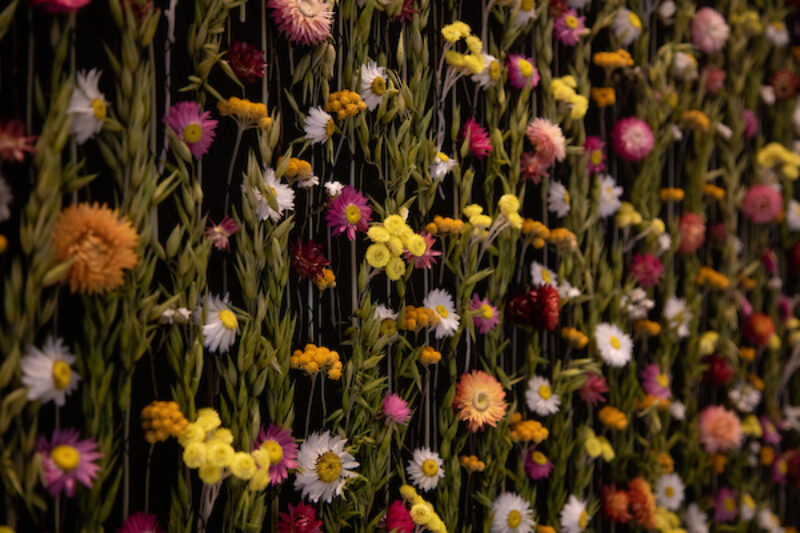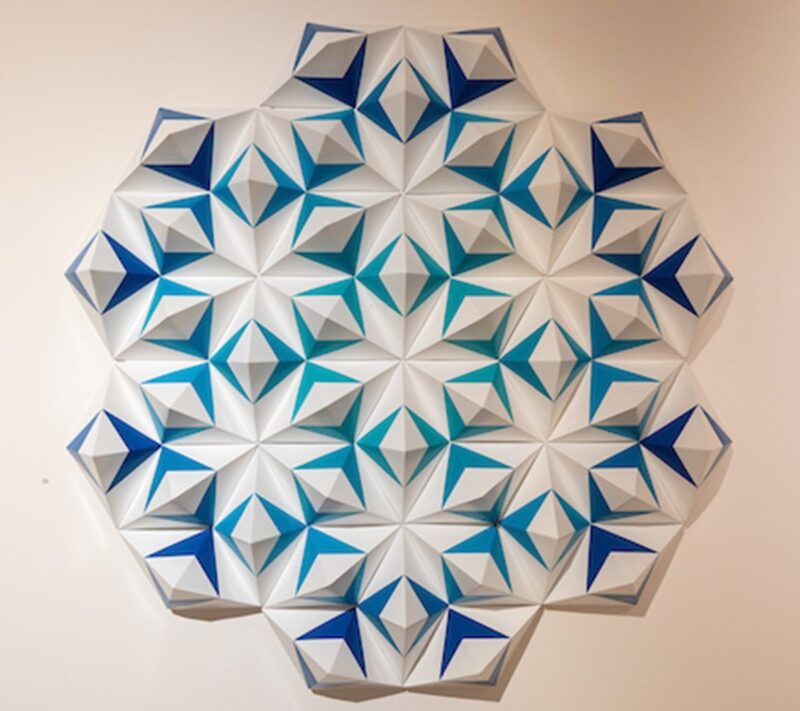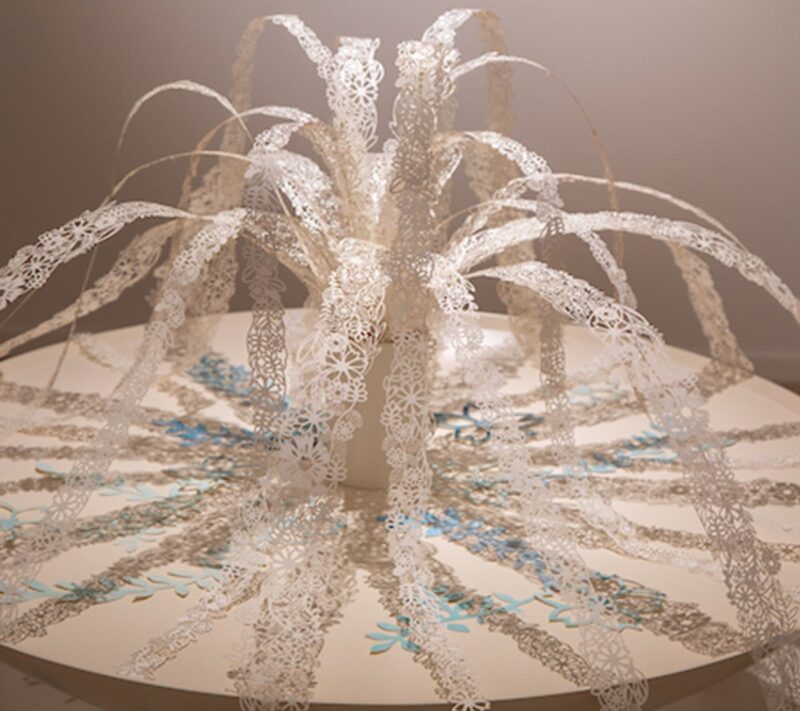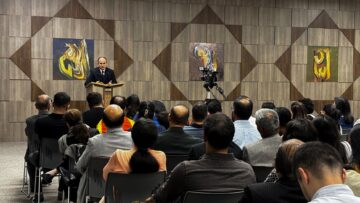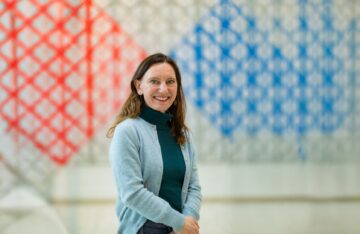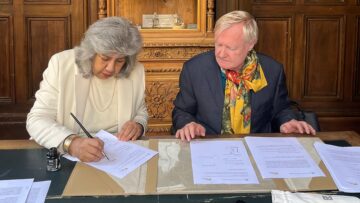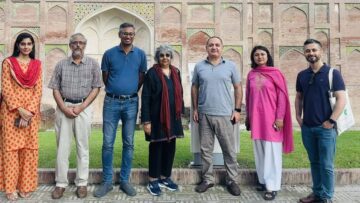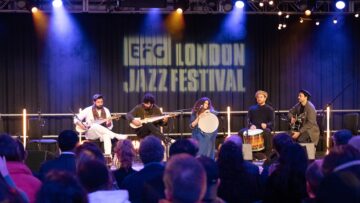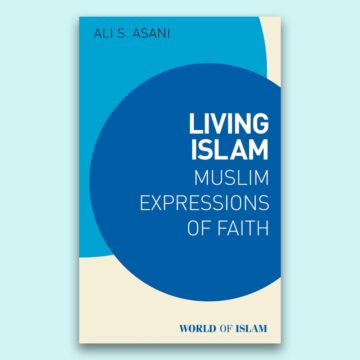Making Paradise: Exploring the Concept of Eden through Art and Islamic Garden Design is the latest exhibition at the Aga Khan Centre Gallery. In this interview, its curator Esen Salma Kaya gives an insight into the multi-sensory show.
How did the Making Paradise exhibition come to be? Could you tell us a bit about its concept and themes?
I wanted to curate an exhibition about Paradise. The very word itself fills us with joy. The commonality across all faiths and spiritual beliefs is the aspiration to be in an ideal state of being—a place that gives us ultimate peace and happiness. I imagined curating a beautiful exhibition that evoked some of these thoughts. My reasons were varied.
Primarily, I wanted to create a multi-sensory exhibition that brought together a confluence of ideas and approaches around the concept of al-Jannah: the Garden of Eden and the concept of Paradise in Islam. I wanted to connect the Aga Khan Centre (AKC) Gallery to its Islamic Gardens and, through this, explore the architectural components of Islamic garden design, universal messages around pluralism and the key references to Paradise mentioned in the Qur’anMuslims believe that the Holy Qur’an contains divine revelations to the Prophet Muhammed received in Mecca and Medina over a period of 23 years in the early 7th century CE. More.
The exhibition contains a range of responses to the concept of Paradise, from historical to contemporary, eastern to western. Why did you want to have this broad scope of interpretation?
I specifically invited artists of eastern and western origins to respond to the theme in order to bring a variety of interpretations and attract diverse audiences to the exhibition. I chose artists primarily for the work they make and not because their practice fit into any specific genre. I liked the idea of juxtaposing eastern and western art, which is something you wouldn’t generally expect in an exhibition with the word “Islamic” in its title. This was intentional and I like to do things differently at times.
Many of the pieces in the exhibition are characterised by their use of geometry and symmetry. What’s the significance of this, in relation to the exhibition’s themes of Paradise and Islamic garden design?
The geometric designs in Islamic art are often built on combinations of repeated squares and circles, which may be overlapped and interlaced. This use of geometry is thought to reflect the language of the universe and helps the believer to reflect on life and the greatness of creation.
The exhibition’s composition and layout is inspired by the classic chahar bagh (meaning four gardens) Islamic garden design, which is based on geometric components and repetition through symmetrical composition. The silent fountain in the centre of the gallery, for example, refers to the water source, a key component in all Islamic gardens. The gallery walls represent each one of the quadrants in the chahar bagh design.
The exhibition is a multi-sensory exploration of Paradise. Why do you want visitors to experience it that way?
The word Paradise conjures imaginings of a space that offers us delights to indulge in and elevate all of our senses. This was at the forefront of my mind when I conceived the exhibition. I wanted the senses to be stimulated as soon as one entered the gallery. I wanted visitors to find the unexpected: to hear birdsong in a gallery where there are no windows, to be greeted by the scent of perfume and to be captivated by the beautiful artworks on display. I wanted visitors to be surprised, to be uplifted and smile as soon as they entered the gallery. The visual stimulus from the artworks marries beautifully with the soundscape and bespoke perfume, creating an altogether sensory and sensual ecosphere that we associate with Paradise.
The exhibition feels very timely, given the increased significance of gardens and green places to many of us over the past year of the Covid-19 pandemic. How does the exhibition explore the social and communal aspects of gardens?
The pandemic has made us all too aware of how important the natural world is to us, we have all yearned to be in green spaces and gardens, so this celebration of the ultimate garden of Eden offers something for everyone. This idea is emphasised through the inclusion of a short film—Islamic Gardens: Catalysts for Change—that depicts the many incredible restoration and garden development projects realised by AKDNThe Aga Khan Development Network (AKDN) is a contemporary endeavour of the Ismaili Imamat to realise the ethics and social conscience of Islam through institutional action. More across the world and how these spaces bring communities together. The exhibition also connects with the gardens at AKC as well as Jellico Gardens, a new paradise garden inspired by Persian and British influences opening later in 2021. Designed by Tom Stuart-Smith in partnership with Argent and AKDN, this will be a free space available for everyone to visit and enjoy.
What do you hope visitors take away from the exhibition?
Making Paradise has something for everyone. You can simply be inspired by the beautiful artwork on show, take away greater knowledge of Islamic garden design, or gain a better understanding of the key elements of Paradise mentioned in the Qur’an and its significance to the global Muslim community—but also how these messages are universal. I would like visitors to learn more about the work of the AKDN that supports and enriches the lives of communities around the world, and the message from His Highness the Aga Khan around the importance of gardens as spaces that build bridges and invite different communities and cultures to come together as one. I would also like people to be inspired by the artworks and to visit our partner organisations to experience what they have to offer too.
This is an edited version of a longer interview with Esen Kaya featured on the.Ismaili.
Making Paradise runs until 30 September 2021 at the Aga Khan Centre Gallery, 10 Handyside Street, London, UK.

